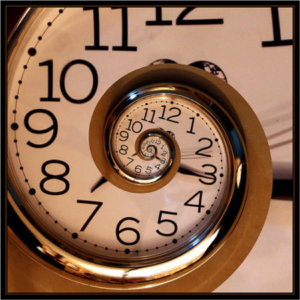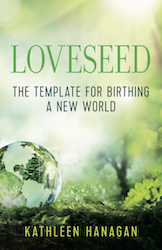 Why do human beings repeat certain behaviors and reactions over and over again, and then attribute the reason to something or someone outside of themselves—the boss, the partner, the lousy living condition? Even when it is obvious to someone else that the person has more ability to change things than they seem to believe, if the person is in an emotional blind spot, they simply cannot see where they possess the power to make a difference. They do not claim the agency they always have to create change, because they do not feel their uncomfortable feelings fully, and instead are projecting the cause outside of themselves.
Why do human beings repeat certain behaviors and reactions over and over again, and then attribute the reason to something or someone outside of themselves—the boss, the partner, the lousy living condition? Even when it is obvious to someone else that the person has more ability to change things than they seem to believe, if the person is in an emotional blind spot, they simply cannot see where they possess the power to make a difference. They do not claim the agency they always have to create change, because they do not feel their uncomfortable feelings fully, and instead are projecting the cause outside of themselves.
These are moments when we say things like, “Why does this keep happening to me?” “Why do I always end up with unfair bosses?” “ I have a way of attracting unstable women.” We seem to “go blind” to what is happening in the moment, if it is so frightening or shaming or shattering to what we believe about ourselves. At these moments, our brains are triggered to feel emotions that we dissociated from, because we have been afraid of what would happen to us if we felt them fully. This avoidance leaves the unconscious emotions within us, waiting to be felt fully in the present moment. The challenges in our lives present the opportunities for us to consciously feel our emotions and to awaken in time. ![]() We create and attract these challenges due to the powerful vibratory point of attraction of our emotional blind spot.
We create and attract these challenges due to the powerful vibratory point of attraction of our emotional blind spot.
What do we do about these blind spots, because they can really complicate our relationships and steal our joy over and over? From our blind spots, just as in driving, our vision is obstructed. We project, disown, blame, and defend ourselves. We become victims of our own misperceptions and insist that someone or something else change. We become triggered to drop into the reptilian brain, and we act out of the survival responses: fight, flight, play dead, submit.
 Some of the answer lies in the illusion of time that all humans buy into. Isaac Newton thought of time as a river flowing everywhere at the same rate, and Einstein evolved his view on time by unifying space and time into a single 4-D entity. Julian Barbour, British physicist, author, and major proponent of the idea of timeless physics, has declared the solution to the problem of time in physics and cosmology as simply, “there’s no such thing as time.”
Some of the answer lies in the illusion of time that all humans buy into. Isaac Newton thought of time as a river flowing everywhere at the same rate, and Einstein evolved his view on time by unifying space and time into a single 4-D entity. Julian Barbour, British physicist, author, and major proponent of the idea of timeless physics, has declared the solution to the problem of time in physics and cosmology as simply, “there’s no such thing as time.”
Barbour says that we are continually moving through a succession of Nows, and each configuration is an arrangement of all that is in the universe. “…many different things coexisting at once. There are simply the Nows, nothing more, nothing less,” says Barbour. There is no past and no future. The illusion of time passing comes from change. We observe changes and we decide that time has passed, when in truth, all the moments are happening now. Since some of the Nows are linked to others, there can be the illusion of the passing of time and a story of cause and effect, when in Barbour’s reality, they all exist simultaneously.
The harsh words by your partner trigger the reaction of the child who was criticized by a parent. Losing a deal triggers the same feelings of being a failure you had as a child with ADD. The only evidence we have of a past is our memory, and yet memory arises from a stable network of neurons in your brain that exists now. Because linear time is an illusion, we are caught in the collective misperception of disconnection between causes and their effects.
One of the reasons it is so difficult to recognize that the chaos and pain of the present moment has its origin in the past , is because so much of what appears to be “time” has passed, and we fail to make the connection between how we are feeling in the moment and the past, because we don’t stay with the feelings long enough to know.
Naturally, we can have here-and-now reactions to what is going on, if someone is harsh or unkind, which are quite different from when we are in our emotional blind spot. We may feel hurt or angry, and we move on. But when we are in our blind spot, we have dissociated from our original pain, and the reaction to the pain of the moment is intense and at times debilitating, and all we want to do is make it go away. Our attention becomes transfixed by the person or event in the world around us, and we often feel the helplessness of the original pain.
If you keep moving too fast, the illusion of time does too, and you may succeed at keeping your emotional blind spots invisible in your rear view mirror for quite a long time. Eventually however, your unmetabolized emotions will have their effect on your health, relationships, sense of purpose and sense of self.
Yet identifying our blind spots is like chasing the wind. We cannot find the actual source, but we see the effects. To change the automatic reactions we experience from our blind spots is the work of a lifetime, and begins with the realization that you have them. ![]() The coach, Martha Beck, says, “You can find the answers if you care to—or more accurately, if you dare to. This is the roughest mission you can undertake: a direct seek-and-destroy attack on your own pockets of denial. Denial is far trickier than simple ignorance. It isn’t the inability to perceive information but the astonishing ability to perceive information while automatically refusing to allow it into consciousness.”
The coach, Martha Beck, says, “You can find the answers if you care to—or more accurately, if you dare to. This is the roughest mission you can undertake: a direct seek-and-destroy attack on your own pockets of denial. Denial is far trickier than simple ignorance. It isn’t the inability to perceive information but the astonishing ability to perceive information while automatically refusing to allow it into consciousness.”
Here are the 3 keys things to do if you want to be liberated from the tyranny of your emotional blind spots:
- Fully embrace the awareness that you have them. Then you will look for them in yourself, rather than choosing the fool’s errand of pointing them out in others.
- Ask for feedback from trusted people in your life and be willing to hear them. You cannot see the nose on your own face, and asking someone you trust and love to reflect back to you something s/he believes you don’t see about yourself, is so powerful. Sometimes it’s good stuff too! You may be dis-owning competencies or qualities that are awesome and beautiful.
- Take the time to feel your feelings fully. Set aside time when something “grabs” you and breathe into the center of your chest to feel that powerful emotional center fully. It may be in your belly too, or arms and legs. Feel the feelings in the body, and breathe, with your mouth slightly open on the outbreath, so that you allow the energy of the emotions to move out of you.
The breath carries the emotions through you and returns them transformed by your own awareness. ![]() You can name the emotions as well, but more importantly, feel them without judgment, and let them move through you, so you become free of their powerful effects, no longer repeatedly having to avoid old pain arising in the moment. You become a clearer channel for whatever is happening in the moment, free to respond with an unbiased mind and compassionate heart. You reclaim your role as co-creator with the free flowing energy of the universe.
You can name the emotions as well, but more importantly, feel them without judgment, and let them move through you, so you become free of their powerful effects, no longer repeatedly having to avoid old pain arising in the moment. You become a clearer channel for whatever is happening in the moment, free to respond with an unbiased mind and compassionate heart. You reclaim your role as co-creator with the free flowing energy of the universe.


